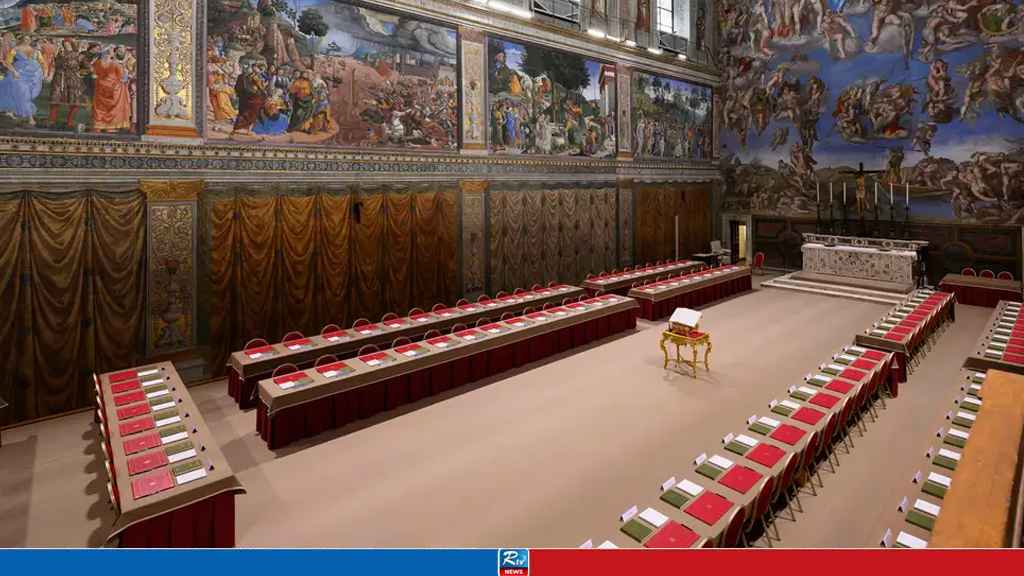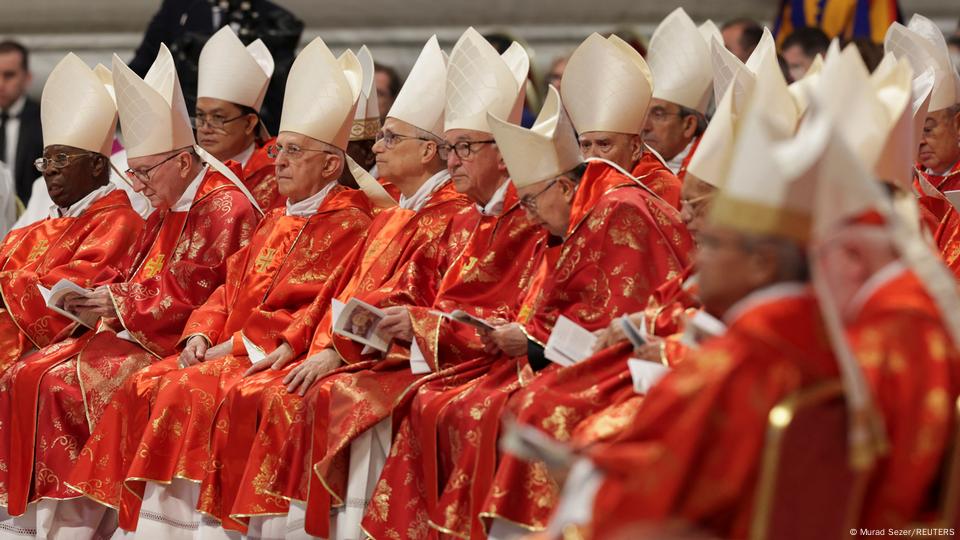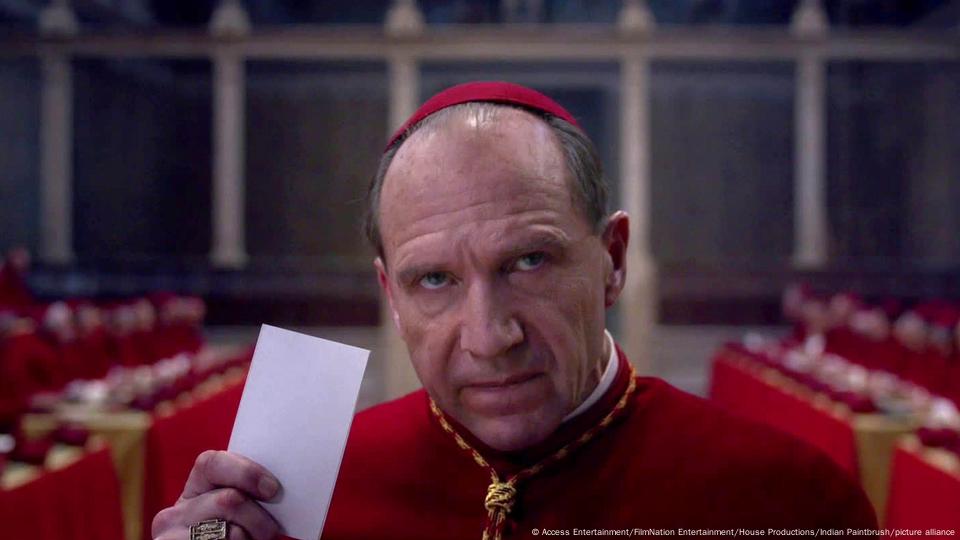Religion
Cardinals Meet for First Vote on New Pope
Wednesday, 07 May 2025 , 07:57 PM

Following the death of Pope Francis on Easter Monday, cardinals are meeting in the Sistine Chapel to elect his successor.
The eyes of the world will be fixed on the Vatican this Wednesday, as Catholic cardinals from around the world meet in the Sistine Chapel to elect a new pope. The 133 cardinals, the so-called "Princes of the Church," have all arrived in Rome.
Conclave officially begins
The College of Cardinals has begun morning prayer at Saint Peter's Basilica in Rome as they prepare for the task of selecting a new leader for the Catholic church. Bells rang and church faithful began gathering at the colonnaded square in front of the vast church in anticipation of the historic event.

What is happening on Wednesday?
The Catholic church's College of Cardinals has gathered at the Vatican in Rome, Italy, and will begin the process of electing a new pontiff to replace Pope Francis on Wednesday.
Francis, the church's 266th pontiff, died on Easter Monday (April 21), after leading the church for 12 years.
Voting during the so-called papal conclave takes place in the Sistine Chapel and is conducted by secret ballot.
On Wednesday, 133 cardinals will begin the process with the traditional Holy Mass for the Election of the Pope (Pro Eligendo Romano Pontefice) at 10:00 a.m. local time (0800 GMT) in St.Peter's Basilica.
At 10:30 a.m., they will gather to pray the Litany of Saints at the Apostolic Palace's Pauline Chapel before proceeding to the Sistine Chapel.
All voting cardinals, each a potential successor to Francis, swear an oath to fulfill the mission of Peter — the first leader of the Catholic church — known as the "Munus Petrinium," should they be elected.
The so-called Master of Pontifical Liturgical Ceremonies, then proclaims the famous Latin words "extra omnes" — everyone out — instructing those who are not voting to leave the Sistine Chapel immediately.
The Preacher Emeritus of the Papal Household, Cardinal Raniero Cantalamessa, will then lead a second meditation attended by the cardinals and the Master of Liturgical Services. The two then leave the chapel, at which point the sequestered cardinal electors begin the quest to select a new leader amongst themselves.
The first ballots will be cast on Wednesday evening and, barring the the unlikely event that the conclave produces a winner on the first ballot, voting will continue four times each day until a new leader has been found. Subsequent votes will be held twice each morning and twice each evening until a new pontiff has been found.
Famously, ballots are burned after each round of voting. The smoke eminating from a special chimney installed in the chapel informs the outside world of the result, with black smoke indicating the failure to find a leader and white smoke letting the world know that a new pope has been found.
Invoking the Holy Spirit in 'difficult and complex' times
As the cardinals set to elect the next pope gathered in prayer, the dean of the College of Cardinals, Giovanni Battista Re, directly addressed their responsibility, saying: "We are here to invoke the help of the Holy Spirit, to implore his light and strength so that the pope elected may be he whom the church and humanity need at this difficult and complex turning point in history."
"This is also a strong call to maintain the unity of the church… a unity that does not mean uniformity but a firm and profound communion in diversity," he said while emphasizing the "exceptional importance" of the decision at hand.
Re urged cardinals to set aside "every personal decision" and pray for, "a pope who knows how best to awaken the consciences of all in today's society, characterized by great technological progress but which tends to forget god."
His words hinted at the great uncertainty gripping the world both geopolitically and technologically, as well as divides within the 2,000 year-old Catholic church itself, which has struggled to come to grips with sexual abuse scandals and dwindling popularity in the face of growing secularism and evangelical Christianity, among others.
A secretive, open-ended process
The selection of a new pope is a process veiled in secrecy. On Monday, officials, conclave staff and the College of Cardinals took an oath of secrecy regarding all matters related to the election.
All who swear the oath are bound to secrecy until death unless otherwise instructed by the new pope or his successors.
The rule, which also bans the use of any audio or video recording devices such as cellphones, derives from the "Universi Dominici Gregis," or apostolic constitution, as proclaimed by Pope John Paul II on February 22, 1996. Failure to uphold the oath results in excommunication from the church.
The deliberative selection process has no set time limit — meaning that it can be over quickly, as in the case of Francis, who was elected on the first day of voting in 2013, or can drag on for weeks or months.
The record for the longest-ever election process ended with the appointment of Gregory X in 1271 after three years of deliberation. It was Gregory who established the institution of the conclave in the papal bull "Ubi periculum" referring to the first words of the document and meaning "where the great danger lies."
Pope's election turned into political thriller in 'Conclave' movie

The death of Pope Francis sparked a renewed interest in the "Conclave" movie about the fictional election of a new pope.
The success of the Oscar-winning film — based on a best-selling book — has in turn ramped up interest in the real-life conclave taking place in the Vatican City.
Most diverse College of Cardinals ever
Pope Francis left his mark on many aspects of the church. That is perhaps most evident now, as he appointed roughly 80% of those cardinals who will elect his successor. That is unique enough, but more striking is the make-up of those electors.
This College of Cardinals is the most geographically and racially diverse ever assembled. Francis, the first Latin American pontiff, was keenly aware of the need for agency among the broader congregation of the global church.
This conclave is the first in the history of the Catholic Church in which Europeans make up less than half of electors. Though most cardinals gathered are from Italy (17), followed by the US (10) and Brazil (7), Francis appointed 163 new cardinals from more than 70 countries during his time at the Holy See, many who had never been represented in the College of Cardinals.
Though he appointed Latin American and Scandinavian cardinals, the greatest number of appointments came from Africa and Asia.
